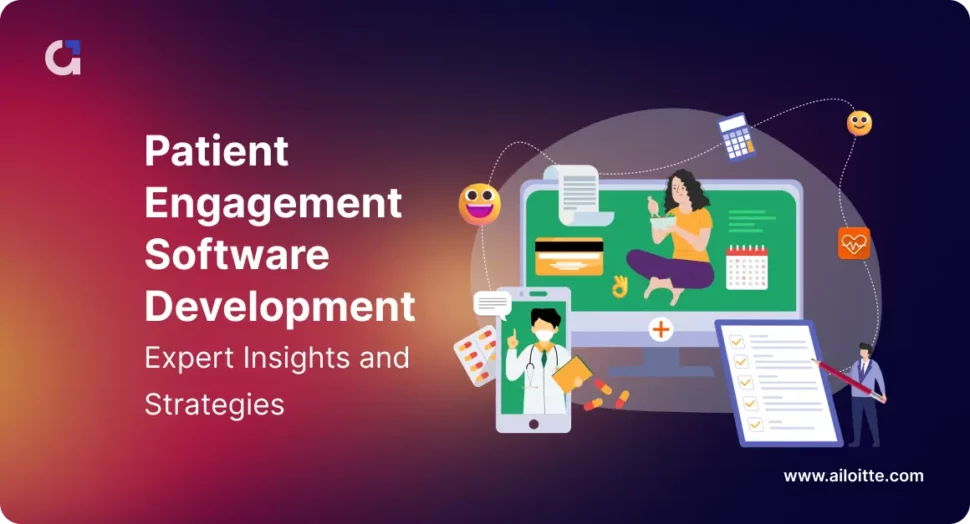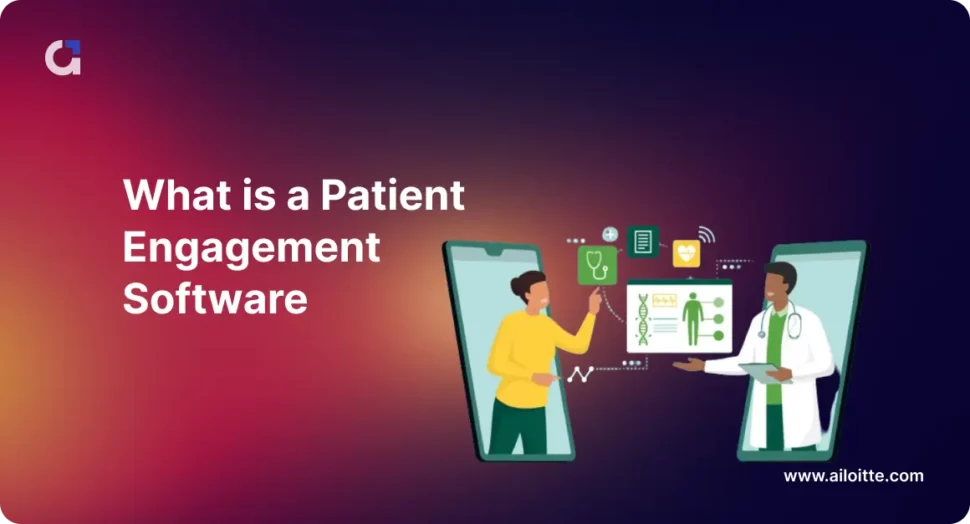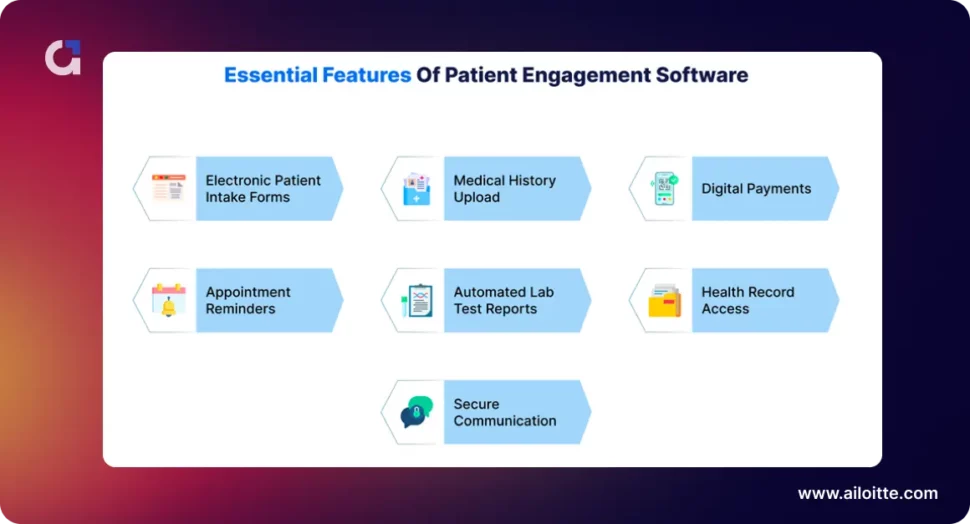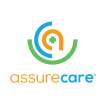
Technology is a key player in changing how healthcare works. It brings fantastic solutions to make hospitals run better. Not only does it make things more efficient, but it also cuts down mistakes, updates old ways of healthcare, and brings in new, groundbreaking ideas.
Despite healthcare changing quickly, it’s been a bit slow to fully embrace the digital and modern tech ideas that could reshape its future. One such technological enhancement that healthcare professionals are looking forward to is “Patient Engagement Software.”
According to a survey by Grand View Research, the global patient engagement solutions market size was valued at USD 22.7 billion in 2023 and is expected to grow at a compound annual growth rate (CAGR) of 17.7% from 2024 to 2030.
Patient engagement software is a useful tool for hospitals and medical groups, providing various benefits for both healthcare providers and patients. As healthcare becomes more complex, and patients take on more financial responsibility, it’s challenging to keep them engaged and satisfied without digital tools.
Patient engagement software helps bridge this gap by extending the reach of healthcare organizations and creating a high-touch patient experience without requiring a lot of traditional resources. While automated appointment reminders are crucial, patient engagement software now offers more components to enhance strategies and deliver better results.
As the market potential expands, an increasing number of medical professionals are exploring healthcare software solutions to enhance patient engagement.
This guide covers the benefits of patient engagement software, its importance, how to use it, and how to choose a partner to get started.
What is a Patient Engagement Software?

Before going in-depth on the specifics of patient engagement software, it’s crucial to understand and give context to what patient engagement means and why it holds significance for healthcare providers and organizations.
Patient engagement is a broad term that refers to a patient actively participating in the healthcare services they receive. This concept is applicable across various healthcare settings, including inpatient care, emergency room visits, retail clinics, and outpatient settings such as doctors’ offices and imaging centers.
Patient engagement matters to healthcare providers as it leads to improved patient outcomes and lower healthcare costs. High patient engagement can lower readmissions and unnecessary tests, accelerate patient payments, promote adherence to care plans, aid in early disease detection, and provide additional benefits.
Patient Engagement Software Solutions are tools designed to actively involve patients in their healthcare journey by providing them with information, communication channels, and interactive features. These solutions aim to enhance patient-provider communication, encourage participation in care plans, and improve overall health outcomes.
The goal is to empower patients, promote collaboration between patients and healthcare providers, and ultimately contribute to a more effective and patient-centric healthcare experience.
Use patient engagement software to:
- Stay in touch with patients consistently
- Encourage follow-up appointments and improve performance quality
- Assess patients for clinical needs and social risks
- Gather real-time direct feedback from patients
- Share announcements with your patient community
- Keep track of your patients’ interactions with your services
Benefits of Patient Engagement Software in Healthcare
Patient engagement software brings well-established benefits to healthcare, catering to various settings and sizes. It is like customer engagement in other businesses. It involves processes, tools, and technologies that help healthcare providers make informed decisions.
Let’s explore the various benefits of patient engagement techniques.
Benefits of patient engagement technology for healthcare systems
Improved Patient Outcomes
Effective patient engagement software enables collaboration and communication between patients and healthcare providers, resulting in enhanced health and well-being.
Higher Revenue
Implementing successful patient engagement strategies encourages patients to undergo regular medical tests, consult with doctors more frequently, and detect issues at earlier stages, contributing to increased business revenue.
Enhanced Patient Retention
Top-notch patient engagement software offers features that simplify tracking medical data, real-time communication with providers, and active patient involvement, leading to improved patient retention.
Ensured Adherence to Healthcare Regulations
Patient engagement platforms tailored for primary care offices are crafted with global healthcare regulatory compliance in consideration like HIPAA, ensuring suitability for operations worldwide.
Benefits of patient engagement apps for patients
Reduced Emergency Visits
Close collaboration between patients and healthcare providers helps in the early detection of issues, resulting in fewer emergency room visits.
Lower Healthcare Costs
Patient engagement strategies facilitate easy communication with doctors at the early signs of illness, leading to reduced healthcare expenses in the long run.
Enhanced Participation in Medical Decisions
Patients actively track their health and connect with doctors, enabling them to play a more involved role in their medical journey.
Round-the-Clock Doctor Access
Healthcare patient engagement ensures convenient 24/7 access for patients to connect with their doctors.
Having highlighted the advantages of patient engagement platforms in healthcare, it’s crucial to bring that to realize these benefits, the patient engagement system must incorporate an advanced set of features.
Essential Features of Patient Engagement Software

A strong patient engagement software comprises features that not only enhance accessibility for patients and doctors but also seamlessly connect them. Here are some of the frequently encountered features of a patient engagement solution.
Electronic Patient Intake Forms
In contemporary patient portals, the ability for patients to complete the registration process digitally is considered essential. This feature not only eliminates the requirement for in-office paper and clipboard registration but also significantly reduces patient wait times.
Medical History Upload
A key advantage of patient engagement software is the inclusion of an Electronic Health Record (EHR) feature, allowing patients to upload and securely share their medical history with healthcare providers. This facilitates informed decision-making by healthcare professionals.
Digital Payments
Incorporating online payment options in the patient portal simplifies real-time payments for patients and enables secure record-keeping for hospital administrators.
Appointment Reminders
Missed appointments are said to cost the US healthcare system more than $150 billion each year. Patient engagement platforms tackle this problem by enabling doctors to send reminders via email, text, or phone, making it more likely for patients to attend their appointments.
Automated Lab Test Reports
Digital patient engagement platforms offer the convenience of automatically sending lab test reports to patients, saving them the time and effort required to follow up with clinics.
Health Record Access
Both patient and doctor portals should include features allowing users to view medical records, securely share them with other healthcare professionals, and utilize them for health claims.
Secure Communication
Successful patient engagement apps prioritize seamless and secure communication. The software should enable easy and secure connections for patients to engage with specialists through various modes such as calls, video calls, and text.
When combined with cutting-edge technologies, these features contribute to the development of innovative digital patient engagement platforms that significantly impact the entire healthcare ecosystem.
Challenges of Introducing Patient Engagement Software
Using patient engagement software helps doctors create better bonds with patients, make healthcare better, and save money. But, if it’s really good, why aren’t all doctors using it? There are some problems you need to know about.
Acceptance and User Uptake:
- Fear of Technology: Some patients, especially older ones, may not feel at ease with technology. They might need help and things made easy for them to use.
- Competing priorities: Patients may find it hard to fit the software into their daily lives with work, family, and health worries.
- Restricted access: Some people might not have internet or the right devices, so they can’t use the software. This can make healthcare differences between different groups of people.
Integration and Technical Concerns:
- Compatibility issues: If the system doesn’t work well with the current healthcare IT services, it can slow down the sharing of information and how things get done.
- Data security and privacy: Having strong security and clear privacy rules is important for creating trust and preventing data leaks.
- Maintenance and updates: Ongoing software maintenance and updates require dedicated resources and budget allocation.
Information and Features:
- Information overload: Providing too much information to patients can make them feel overwhelmed and confused, leading to disinterest.
- Personalized content: To help different patients, we need flexible and changing information that suits their preferences and how much they know about health.
- Limited engagement options: Complicated screens, not enough fun things to do, and repetitive tasks can make users bored and stop using the software.
Organizational and Cultural Barriers:
- Managing Changes: Doctors and healthcare places might not like changing how they usually do things.
- Lack of training and support: Insufficient training for providers and patients can block effective software utilization.
- Financial Factors: The cost of software introduction, maintenance, and training can be a major investment for healthcare institutions.
Measuring Success and Sustainability:
- Attributing results: Showing the software’s direct impact on improved health outcomes can be challenging.
- Long-term engagement: To keep users interested, update content and features regularly, and listen to their feedback.
- Data privacy regulations: Dealing with changing privacy rules and keeping patient data safe makes things more complicated.
Make sure the software is easy for users, teaches them well, keeps their information safe, and always makes things better with feedback to help patients and make their health better.
Why Choose Ailoitte for Developing Patient Engagement Software?
Custom patient engagement software is no longer a platform just for communication and digital coaching. Now, it does a lot more good things for patients and doctors. Patients can learn more about their health and life, and take medicine better. Doctors can make healthcare work better and give better treatment for less money.
Ailoitte provides comprehensive patient engagement solutions for healthcare providers.
Our platform does important tasks automatically, sends reminders, and makes patient interactions work better. Whether you want lots of features or something just for your way of working, we can help.
Our user-friendly solution allows clinical support staff to seamlessly connect with patients. With years of expertise in developing healthcare software solutions for different organizations, feel free to contact us to discuss creating patient engagement software for your company.
Get in touch with us today to talk about your project.
Frequently Asked Questions
Patient engagement means informing patients about their health and supporting them in making better decisions for a healthier outcome. This leads to improved health and lower costs.
Recognize and group patients to understand their specific needs
Educate patients about their health
Engage them in important decisions
Arrange regular check-ins
Facilitate feedback
Safeguard patient data and ensure secure communication
Patient engagement means patients actively making choices to enhance their health. Patient experience refers to the overall satisfaction (positive, negative, or neutral) a patient has had with their healthcare providers. Patient engagement is a method to enhance the overall patient experience.
Patient experience data includes data that provide information about patients’ experiences with a disease or condition.
The Patient Satisfaction Score is a measure of how satisfied patients are with the healthcare they receive. It’s determined through surveys where patients rate their satisfaction on a scale of 1 to 5.
The users of patient engagement software include healthcare administrators, patients, doctors, nurses, and other medical staff.
Leave a Reply
Want to develop Patient Engagement Software
Get your software on time and within budget


















.png)
.png)
.png)



Leave a Comment